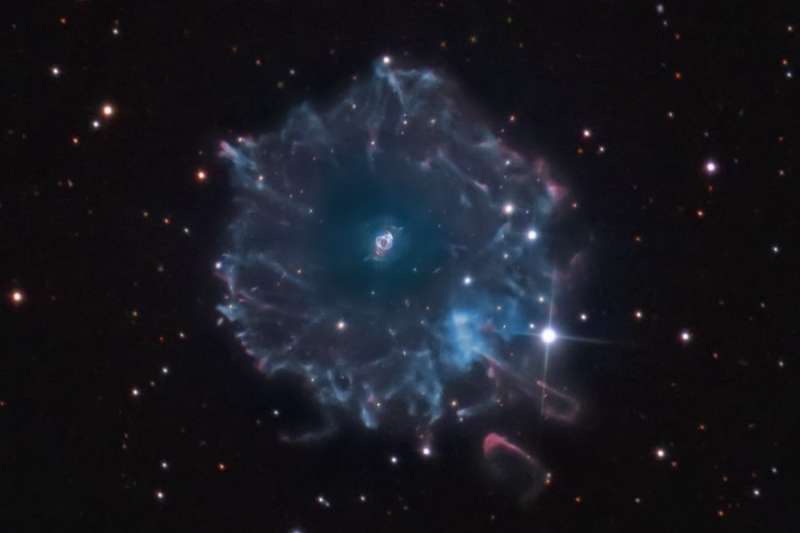Credit & Copyright: Don Goldman
Explanation:
The Cat's Eye Nebula
(NGC 6543) is one of the best known planetary
nebulae in the sky.
Its haunting symmetries are seen
in the very central region of
this tantalizing image, processed to reveal the
enormous but extremely faint halo of gaseous material,
about 6 light-years across, which surrounds the brighter,
familiar planetary nebula.
Made with narrow and broadband data
the composite picture shows the remarkably strong extended emission from
twice ionized oxygen atoms in blue-green hues and ionized hydrogen
and nitrogen in red.
Planetary
nebulae have long been appreciated as a final phase
in the life of a sun-like star.
But recently many planetaries have been
found to have halos like this one, likely formed of material shrugged
off during earlier active episodes in the star's evolution.
While the
planetary
nebula phase is thought to last for around 10,000 years,
astronomers estimate the age of the
outer filamentary
portions of this halo to be 50,000 to 90,000 years.
1999 2000 2001 2002 2003 2004 2005 2006 2007 2008 2009 2010 2011 2012 2013 2014 2015 2016 2017 2018 2019 2020 2021 2022 2023 2024 2025 |
Yanvar' Fevral' Mart Aprel' Mai Iyun' Iyul' Avgust Sentyabr' Oktyabr' Noyabr' Dekabr' |
NASA Web Site Statements, Warnings, and Disclaimers
NASA Official: Jay Norris. Specific rights apply.
A service of: LHEA at NASA / GSFC
& Michigan Tech. U.
|
Publikacii s klyuchevymi slovami:
Cat's Eye Nebula - planetary nebula - halo - tumannost' Koshachii glaz - Planetarnaya tumannost' - galo
Publikacii so slovami: Cat's Eye Nebula - planetary nebula - halo - tumannost' Koshachii glaz - Planetarnaya tumannost' - galo | |
Sm. takzhe:
Vse publikacii na tu zhe temu >> | |
